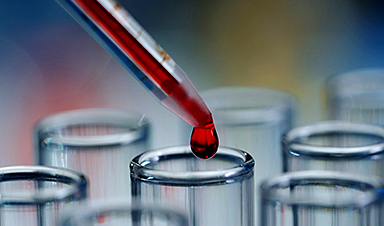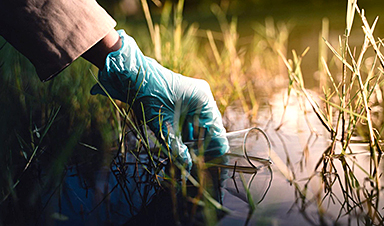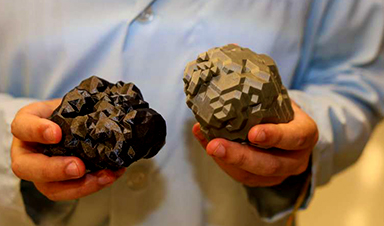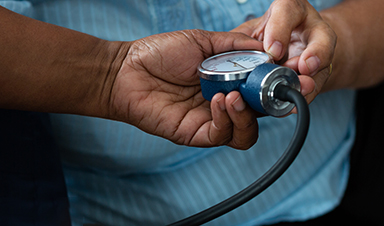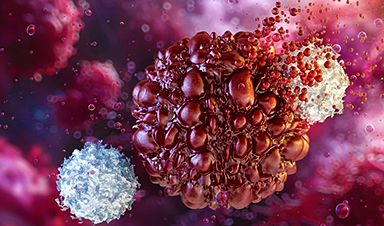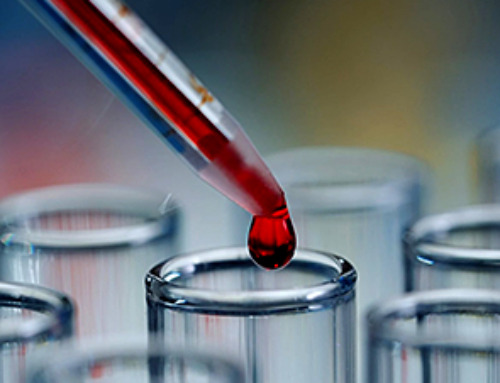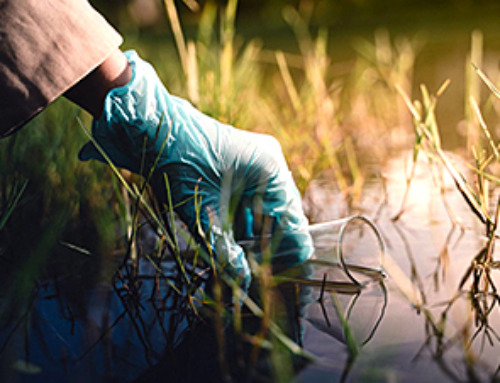Researchers have shown that a fluorescence detection system that doesn’t contain any lenses can provide highly sensitive detection of deadly microorganisms in drinking water. With further development, the new approach could provide a low-cost and easy-to-use way to monitor water quality in resource-limited settings such as developing countries or areas affected by disasters. It could also be useful when water safety results are needed quickly, such as for swimming events, a concern highlighted during the Paris Olympics.
In developing countries, unsafe water sources are responsible for more than one million deaths each year. We hope that our work will facilitate the development of simpler and cost-effective yet highly efficient sensing paradigms for drinking water, saving countless lives around the world.”
Ashim Dhakal Study Team Leader, Phutung Research Institute
Current methods used to assess microbial contamination in water require culturing the water samples and then quantifying harmful bacteria. This can take over 18 hours, making it impractical when immediate confirmation of water safety is needed. This is also a key reason why water surveillance is ineffective in developing countries, where the required skilled human resources, infrastructure and reagents are not readily available.
In Optica, Optica Publishing Group’s journal for high-impact research, researchers from Phutung Research Institute, University of São Paulo in Brazil and University of York in the UK report that their new water monitoring fluorometer can detect fluorescent proteins from bacteria in water down to levels of less than one part per billion, without using any lenses. This sensitivity meets the World Health Organization’s criteria for detecting fecal contamination in drinking water.
“Today’s fluorometers typically use costly lenses that are made of specialty UV-transparent glass and require precise positioning,” said Dhakal. “We show that eliminating the lenses not only reduces the device cost, size and weight but also provides better performance given that we are not aiming for imaging here.”
Getting rid of the lenses
This research is part of a larger project funded in part by the Optica Foundation Challenge, awarded to Dhakal in 2022 to pilot a portable, low-cost and user-friendly instrument for real-time water quality assessment. During development, the researchers closely examined the fundamentals of optical signal generation in applications like water quality monitoring. They discovered that while optical lenses are commonly used in devices such as cameras, microscopes and telescopes, these optical components often reduce performance for practical situations that don’t require images.
“This was an important finding because lenses account for a significant share of the costs of optical systems and their bulk and weight make it difficult to create practical portable devices,” said Dhakal. “Our analysis revealed that using a light source, detectors and sample sizes that are all as large and as close to each other as possible produces a stronger signal, leading to better performance for water quality monitoring.”
Comparison with a lensed system
Based on their findings, the researchers designed a lensless fluorescence system using large (1-2 mm2) LEDs and detectors, which have recently become available in UV wavelengths. It works by using UV light to excite proteins from harmful microbes and then detecting the resulting fluorescence.
In addition to demonstrating the lensless system’s sensitivity, they also showed that it produced a fluorescence signal that is about double the strength of a lensed system. They found that the performance of the lensed system was limited by its numerical aperture, the use of larger sources and detectors and the finite imaging distance required between the components and the sample.
The researchers are now developing a pocket-sized version of the lensless fluorometers for field testing. They point out that the instrument must be shown to withstand the harsh environments found in multiple scenarios before being widely applied. They are also working to demonstrate that their approach meets the specificity requirements for detecting specific bacterial contamination by incorporating measurement of multiple parameters into the device.
“Our system is already highly useful because the sensitive and accurate measurement of concentration of bacterial proteins that it provides is directly related to efficiency of water treatment, the dose of disinfectants required for disinfection and the likelihood of bacterial proliferation in a recontamination event,” said Dhakal.
Maharjan, A., et al. (2024). When a lensless fluorometer outperforms a lensed system. Optica. doi.org/10.1364/OPTICA.527289
News
Researchers propose five key questions for effective adoption of AI in clinical practice
While Artificial Intelligence (AI) can be a powerful tool that physicians can use to help diagnose their patients and has great potential to improve accuracy, efficiency and patient safety, it has its drawbacks. It [...]
Advancements and clinical translation of intelligent nanodrugs for breast cancer treatment
A comprehensive review in "Biofunct. Mater." meticulously details the most recent advancements and clinical translation of intelligent nanodrugs for breast cancer treatment. This paper presents an exhaustive overview of subtype-specific nanostrategies, the clinical benefits [...]
It’s Not “All in Your Head”: Scientists Develop Revolutionary Blood Test for Chronic Fatigue Syndrome
A 96% accurate blood test for ME/CFS could transform diagnosis and pave the way for future long COVID detection. Researchers from the University of East Anglia and Oxford Biodynamics have created a highly accurate [...]
How Far Can the Body Go? Scientists Find the Ultimate Limit of Human Endurance
Even the most elite endurance athletes can’t outrun biology. A new study finds that humans hit a metabolic ceiling at about 2.5 times their resting energy burn. When ultra-runners take on races that last [...]
World’s Rivers “Overdosing” on Human Antibiotics, Study Finds
Researchers estimate that approximately 8,500 tons of antibiotics enter river systems each year after passing through the human body and wastewater treatment processes. Rivers spanning millions of kilometers across the globe are contaminated with [...]
Yale Scientists Solve a Century-Old Brain Wave Mystery
Yale scientists traced gamma brain waves to thalamus-cortex interactions. The discovery could reveal how brain rhythms shape perception and disease. For more than a century, scientists have observed rhythmic waves of synchronized neuronal activity [...]
Can introducing peanuts early prevent allergies? Real-world data confirms it helps
New evidence from a large U.S. primary care network shows that early peanut introduction, endorsed in 2015 and 2017 guidelines, was followed by a marked decline in clinician-diagnosed peanut and overall food allergies among [...]
Nanoparticle blueprints reveal path to smarter medicines
Lipid nanoparticles (LNPs) are the delivery vehicles of modern medicine, carrying cancer drugs, gene therapies and vaccines into cells. Until recently, many scientists assumed that all LNPs followed more or less the same blueprint, [...]
How nanomedicine and AI are teaming up to tackle neurodegenerative diseases
When I first realized the scale of the challenge posed by neurodegenerative diseases, such as Alzheimer's, Parkinson's disease and amyotrophic lateral sclerosis (ALS), I felt simultaneously humbled and motivated. These disorders are not caused [...]
Self-Organizing Light Could Transform Computing and Communications
USC engineers have demonstrated a new kind of optical device that lets light organize its own route using the principles of thermodynamics. Instead of relying on switches or digital control, the light finds its own [...]
Groundbreaking New Way of Measuring Blood Pressure Could Save Thousands of Lives
A new method that improves the accuracy of interpreting blood pressure measurements taken at the ankle could be vital for individuals who are unable to have their blood pressure measured on the arm. A newly developed [...]
Scientist tackles key roadblock for AI in drug discovery
The drug development pipeline is a costly and lengthy process. Identifying high-quality "hit" compounds—those with high potency, selectivity, and favorable metabolic properties—at the earliest stages is important for reducing cost and accelerating the path [...]
Nanoplastics with environmental coatings can sneak past the skin’s defenses
Plastic is ubiquitous in the modern world, and it's notorious for taking a long time to completely break down in the environment - if it ever does. But even without breaking down completely, plastic [...]
Chernobyl scientists discover black fungus feeding on deadly radiation
It looks pretty sinister, but it might actually be incredibly helpful When reactor number four in Chernobyl exploded, it triggered the worst nuclear disaster in history, one which the surrounding area still has not [...]
Long COVID Is Taking A Silent Toll On Mental Health, Here’s What Experts Say
Months after recovering from COVID-19, many people continue to feel unwell. They speak of exhaustion that doesn’t fade, difficulty breathing, or an unsettling mental haze. What’s becoming increasingly clear is that recovery from the [...]
Study Delivers Cancer Drugs Directly to the Tumor Nucleus
A new peptide-based nanotube treatment sneaks chemo into drug-resistant cancer cells, providing a unique workaround to one of oncology’s toughest hurdles. CiQUS researchers have developed a novel molecular strategy that allows a chemotherapy drug to [...]



